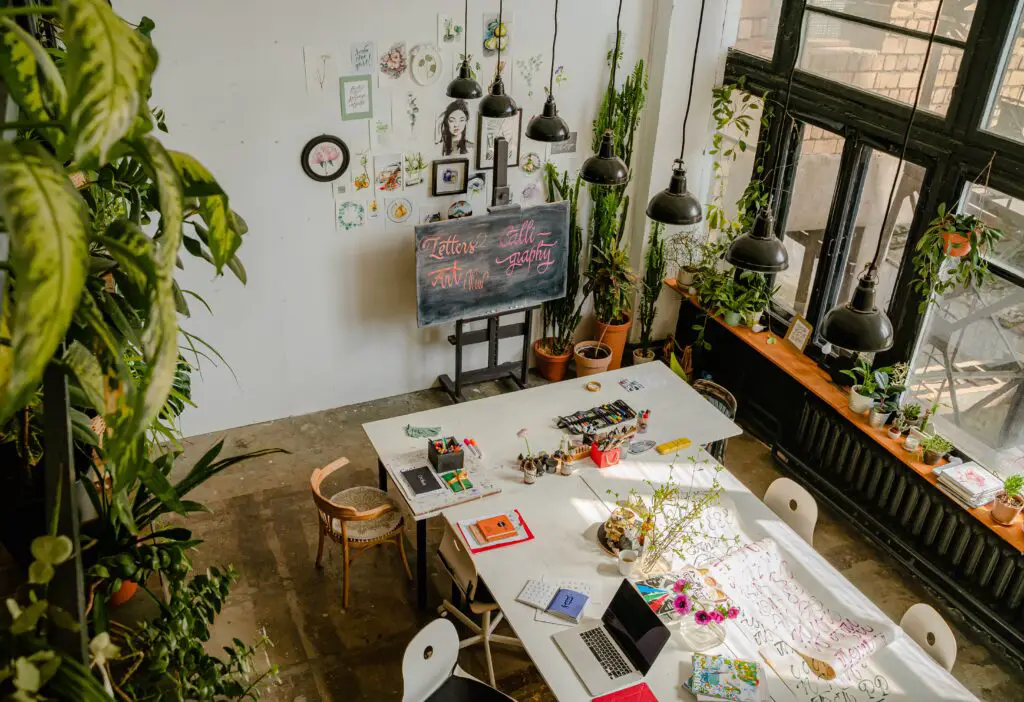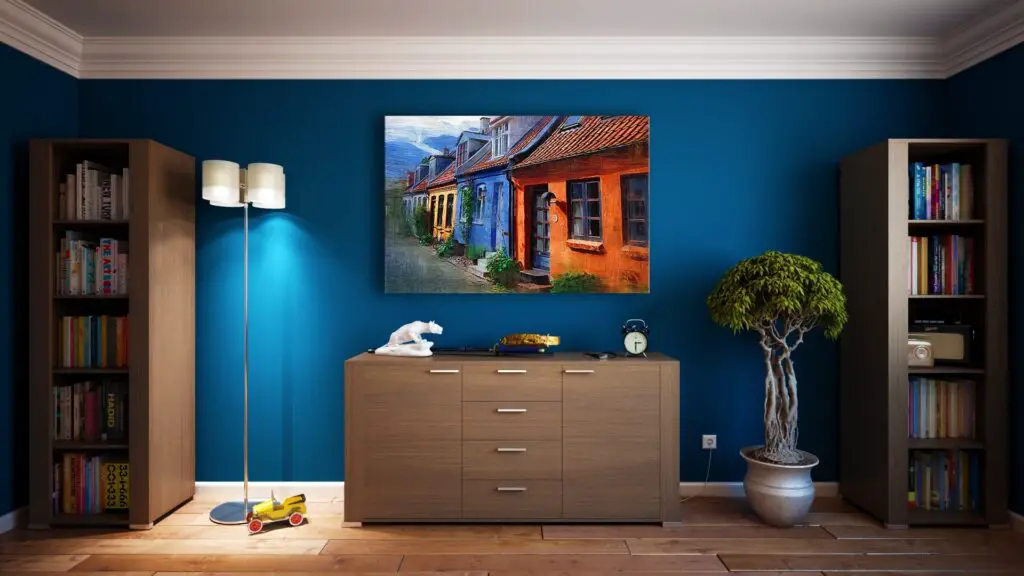We crave the serenity and beauty of the great outdoors, even within the confines of our homes and offices. That’s where indoor plants and greenery come in. Not only do they add a touch of natural beauty to our spaces, but they also offer numerous benefits for our well-being.
In this blog post, we will delve into the fascinating world of indoor plants and greenery. We’ll explore a variety of ideas to help you bring the outdoors in and create a lush and vibrant indoor oasis.
Choosing the Right Indoor Plants

When it comes to creating an indoor garden, selecting the right plants is crucial. You want to choose plants that not only thrive indoors but also suit your specific space and lifestyle. Here are some considerations to keep in mind:
- Lighting requirements: Different plants have different lighting needs. Some thrive in low-light conditions, while others require direct sunlight. Assess the lighting conditions in your space to determine which plants will flourish.
- Temperature and humidity preferences: Indoor plants have varying temperature and humidity requirements. Some prefer cooler environments, while others thrive in warmth. Consider the climate of your home and choose plants that can adapt to it.
- Space availability: Take stock of the available space in your home or office. Whether you have ample floor space or limited surface area, indoor plants can fit any situation.
Once you have considered these factors, it’s time to explore the wide array of indoor plants available. Here are some popular choices:
- Low-light tolerant plants: If you have areas in your space with limited natural light, don’t worry! There are plenty of plants that can thrive in low-light conditions, such as the snake plant (Sansevieria), pothos (Epipremnum aureum), and ZZ plant (Zamioculcas zamiifolia).
- Succulents and cacti: Succulents and cacti are perfect for those who are new to indoor gardening or have limited time for plant care. These hardy plants are known for their water-storing abilities and can withstand drier indoor environments.
- Air-purifying plants: In addition to their aesthetic appeal, certain indoor plants can help improve air quality by removing toxins. Plants like the spider plant (Chlorophytum comosum), peace lily (Spathiphyllum), and Boston fern (Nephrolepis exaltata) are excellent choices for cleaner indoor air.
Creating a Green Corner

Now that you have selected your indoor plants, creating a dedicated green corner in your space is time. Follow these steps to transform a corner or any suitable area into a lush oasis:
- Selecting an ideal location for indoor plants: Assess your space to find the perfect spot for your plants. Consider natural light sources, such as windows or skylights, as well as drafts that can affect plant health.
- Choosing suitable containers and planters: Pots and planters not only provide a home for your plants but also contribute to the overall aesthetic. Select containers that match your style and the needs of your plants, considering factors such as material, size, and drainage.
- Arranging plants for aesthetic appeal: Experiment with different arrangements to create an eye-catching display. Vary plant heights and sizes to add visual interest and combine plants with different textures and colors for a harmonious composition.
Vertical Gardens and Hanging Plants

If you’re short on floor space or want to add a unique dimension to your indoor garden, consider incorporating vertical gardens and hanging plants. These ideas not only save space but also create a striking visual impact. Let’s explore:
Benefits of vertical gardens
Vertical gardens are a fantastic solution for those with limited floor space. They allow you to maximize your plant collection without cluttering your living area. Additionally, vertical gardens can serve as decorative and artistic focal points.
There are various ways to create vertical gardens indoors. Living walls, where plants are grown directly on a vertical structure, are popular options. Alternatively, vertical planters and trellises can be used to create a cascading effect.
Hanging plants and their care
Hanging plants are excellent for adding greenery to unused vertical space. They can be suspended from the ceiling or mounted on walls using specialized hooks or hangers. Consider plants like the spider plant, pothos, or trailing ivy for their graceful cascading foliage.
Indoor Herb and Vegetable Gardens

Imagine having fresh herbs and vegetables at your fingertips, regardless of the season. Indoor herb and vegetable gardens offer just that, along with the joy of growing your own food. Here’s how to get started:
Advantages of growing herbs and vegetables indoors
Indoor gardens provide you with access to fresh, flavorful ingredients throughout the year. You’ll have the satisfaction of knowing exactly how your food was grown, free from pesticides or harmful chemicals.
Choosing suitable herbs and vegetables
Some herbs and vegetables thrive indoors, making them perfect for indoor gardening. Look for compact and dwarf varieties that don’t require extensive space. Herbs like basil, mint, and thyme, as well as vegetables like cherry tomatoes and lettuce, are popular choices.
Setting up an indoor herb and vegetable garden
Select containers with proper drainage for your herbs and vegetables. Use a well-draining potting mix and ensure adequate lighting, either through natural sunlight or artificial grow lights. Maintain optimal temperature and humidity levels for successful growth.
Maintaining Healthy Indoor Plants

Proper care and maintenance are vital for the health and longevity of your indoor plants. Follow these guidelines to ensure your plants thrive:
- Watering guidelines and techniques: Different plants have different water requirements. It’s important to determine the proper watering frequency for each species. Techniques such as the finger test and moisture meters can help you gauge moisture levels in the soil.
- Nutrient requirements and fertilization: Indoor plants rely on regular feeding to stay healthy. Understand the specific nutrient needs of your plants and choose appropriate fertilizers. Remember to follow package instructions and avoid overfertilization, as it can harm your plants.
- Managing pests and diseases: Despite your best efforts, pests and diseases can still affect your indoor plants. Learn about common indoor plant pests like aphids, mealybugs, and spider mites, and explore natural and chemical pest control methods to keep your plants healthy and pest-free.
Incorporating Plants into Home Décor

Indoor plants not only bring nature indoors but also enhance the aesthetic appeal of your living spaces. Here are some ideas for integrating plants into different rooms:
Living room and dining area
Place a statement plant as a focal point in your living room or dining area. Consider large plants like the fiddle-leaf fig (Ficus lyrata) or a cascading ivy plant to add drama and greenery to your space.
Bedroom and home office
Create a calming ambiance in your bedroom by placing a peace lily or snake plant on a nightstand or dresser. In your home office, a small succulent or cactus can add a touch of green and boost productivity.
Styling ideas for indoor plants
Group plants together to create a visually stunning display. Combine different plant heights, textures, and colors to add depth and interest. Enhance their presence with decorative elements such as stylish plant stands or macramé hangers.
Conclusion
Incorporating indoor plants and greenery into your living spaces brings the beauty and vitality of nature right to your doorstep. By selecting the right plants, creating dedicated green corners, exploring vertical gardens and hanging plants, and nurturing indoor herb and vegetable gardens, you can transform your space into a lush oasis.
Remember to properly care for and maintain your plants to ensure their health and longevity. Finally, unleash your creativity and integrate plants seamlessly into your home decor for a truly harmonious and inviting atmosphere. So, go ahead and start bringing the outdoors in!
FAQs (Frequently Asked Questions)
1. Can I grow plants indoors if I don’t have much natural light?
Yes, you can! There are several low-light tolerant plants that can thrive even in areas with limited natural light. Consider plants like the snake plant, pothos, or ZZ plant, which can adapt to low-light conditions.
2. How do I know when to water my indoor plants?
The frequency of watering varies depending on the plant species and environmental conditions. To determine when to water, you can use techniques like the finger test (checking soil moisture with your finger) or invest in a moisture meter.
3. What are some natural ways to control pests on indoor plants?
Natural pest control methods include using neem oil, insecticidal soap, or creating homemade insect traps. You can also introduce beneficial insects like ladybugs or predatory mites to combat pests.
4. Can you grow vegetables indoors throughout the year?
Yes! Indoor herb and vegetable gardens allow you to grow fresh produce year-round, regardless of the outdoor season. By providing the right conditions, such as proper lighting and temperature, you can enjoy homegrown vegetables at any time.



